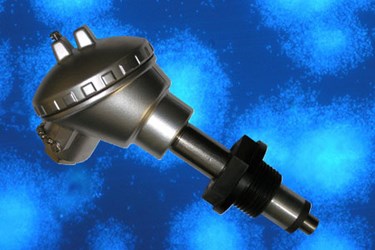A New Approach To Early Biofilm Detection

By Laura Martin

When bacterial biofilm grows in an industrial water system, it can cause a host of problems, says Giovanni Pavanello, a researcher with the Marine Sciences Research Institute of the Italian National Research Council (ISMAR-CNR).
Biofilm, which occurs when communities of microorganisms attach to a surface, can deteriorate structures and products and cause potentially harmful biological contaminations.
“Where water is used as an element of industrial processes, bacterial biofilms appear sooner or later,” says Pavanello. “It is well known that biofilms represent an extremely hospitable environment for pathogens, even when they are not involved directly in its formation.”
But detecting this predator can be tricky, requiring expensive, time-consuming laboratory analysis that isn’t always representative of real-world conditions.
To assist industrial operators in managing and preventing biofilm, Italian start-up ALVIM Srl created a monitoring system that provides early warning detection of bacterial biofilm growing on pipelines, tanks, heat exchangers, RO membranes, and other equipment.
The new ALVIM monitoring system, developed by Italian private companies in collaboration with ISMAR-CNR, detects bacterial settlements in real-time. Based on that data, the system manually or automatically adjusts and optimizes biofilm prevention and water cleaning treatments.
The biofilm monitoring system is the flagship product of ALVIM, which was named the number one “most compelling” company for the first quarter of 2013 by independent research and advisory firm Lux Research. Lux predicted that ALVIM’s biofilm monitoring system would “see rapid adoption by industries that have previously counted on indirect measures of safety.”
An accurate monitoring system is critical for power plants, refineries, food and beverage production plants, desalination facilities, paper mills, and other sectors that deal with biofilm, says Pavanello, who serves as director of ALVIM.
This is because biocides, the chemical substances used to prevent biofilm, can negatively affect the environment after the compounds are discharged from the treatment process into rivers and lakes. Biocides kill bacteria or inhibit their growth.
In addition, overuse of biocides can cause unnecessary expense, Pavanello says.
“In most cases biocides application is carried out regularly, daily or weekly, or when visible problems arise, and neither the real need of the treatment nor its effectiveness are really verified,” he says. “Optimization can cut the total cost of the biofilm problem.”
The ALVIM system allows users to treats biofilm as soon as it starts to grow. This results in a reduction in the amount of biocides used, since the biofilm bacteria at this stage is not yet sheltered by the gelatinous matrix it creates to protect itself.
“Many biofilm-related issues — biological contamination, microbial corrosion, etc. — start as soon as the first bacterial spots appear on a surface,” Pavanello says.
Visit Water Online for information about biofilm prevention and removal.
